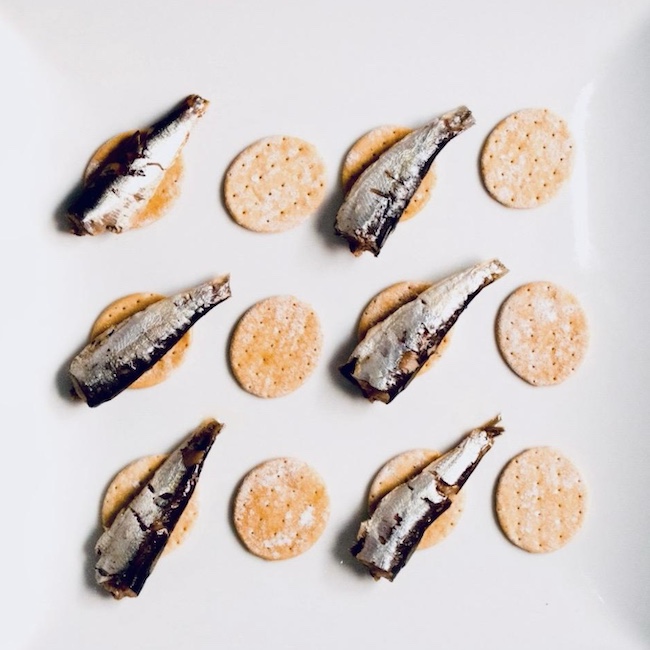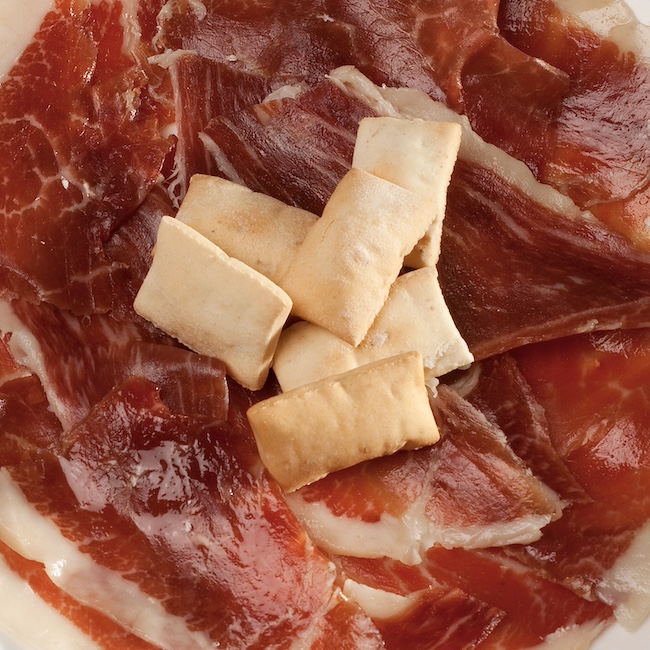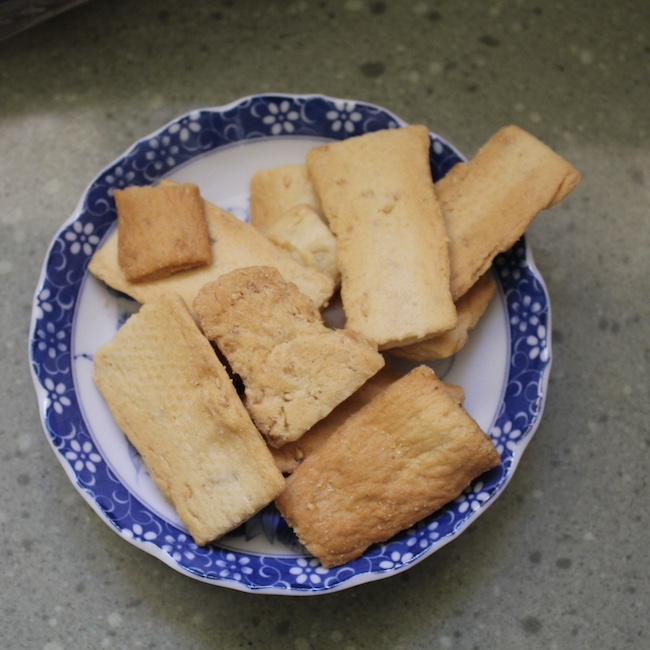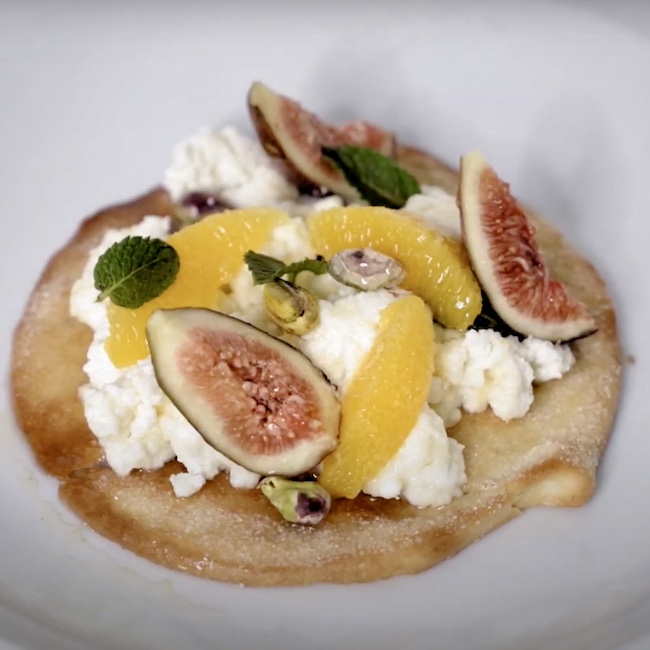by Fiona Dunlop - @ffdunlop
.png.transform/rendition-xs/image_image%20(1).png)
Great for eating with cold cuts and cheeses, they can also be eaten as part of tapas

by Fiona Dunlop - @ffdunlop
It’s a familiar sound – that addictive crunch of picos, those little breadsticks that accompany platters of Spanish charcutería or cheese, above all in southern Spain. As moreish as nuts or crisps and with the same memorable soundtrack, picos are a great snack to accompany Spain’s dizzying array of cold cuts and cheese. Then, for those with a sweet tooth, Andalusia also produces tortas de aceite, a unique type of large, friable biscuit that has gained a cult following for over a century.
Picos are just one form of dried bread shaped into little sticks; many other versions like regañas, rosquillas and regional types all contribute to Spain’s gastronomic diversity. The basic ingredients are wheat flour, water, extra virgin olive-oil, salt and yeast, although variations increasingly multiply and fermentation plays a role too when sourdough enters the mix. Some include ajonjolí - the Andalusian word for sesame.
Whether paired with tapas or accompaniments to iconic Spanish dishes and produce, their inimitable texture is a fast motor to stimulate appetites. Chorizo, lomo, salchichón, jamón – Spain’s treasure trove of salty embutidos (cured meats, mainly pork) excel with the sober contrast in flavor and crunchy texture of picos. Thy also pair perfectly with cheese such as rich, mature Manchego PDO, nutty Mahón-Menorca PDO or Galicia’s buttery Tetilla. Sometimes sweetness joins the platter in the form of fresh figs, dates or quince paste. Other tapas plates find breadsticks accompanying a dip or a simple bowl of olives.

A driving force of diversification
Today, whether formed as short sticks or rings, alternatively as little square crackers named regañás, Spanish breadsticks are fast gaining popularity abroad. One of the largest manufacturers, Obando, in Utrera, near Seville, only started exporting in 2015 to the UK and the US (where, naturally, chef José Andrés is a great fan). During the pandemic lockdown, sales rocketed by 631% (2020 - 2021), the following year increased by 84%, and between 2022 and 2023 by 48%. Picos abroad have a rosy future it seems. One reason is that Obando has ingeniously diversified its range, for example integrating broccoli, ginger and turmeric into one variety, producing gluten-free and wholemeal versions, and developing a charcoal-coloured cracker aimed at high end restaurants. Such creativity has inspired many other companies in the sector.
Made for the sea… or from leftovers
Typically with such a rustic product, its origin is hazy, though a convincing theory is linked to sea-faring, of which the Spanish are past masters. For years Andalusian ports bade farewell to galleons supplied with these dry versions of bread which, stored in tins, lasted for months - perfect to sustain hungry sailors. Another theory, from Jerez, is that they derived from surplus; since bakeries sold their bread in the morning, breadsticks made profitable use of leftover dough, and picos were even delivered to tabancos in time for evening tapas.

Perfect add-ons for tapas
As for regañás, those delicious little square crackers, they often function as scoops for tapas such as ensaladilla, patés or tartars. Usually made with sourdough, they may incorporate herbs such as rosemary or thyme for an extra kick. Like picos, their origin is southern Spain and olive oil is liberally used both in the dough and for brushing the crackers before slow baking. Sea salt is the other essential ingredient. Another Andalusian breadstick, rosquillas, from Jaén, takes the form of large, delicate rings like bracelets.
Other versions include colines, breadsticks shaped like mini-loaves, equally traditional, or pan soplao, light, hollow, and crispy little parcels obtained by rolling out very thin dough and baking it at a high temperature so that it puffs up. Chefs love stuffing these with paté or an emulsion to make a delicious appetizer of contrasting textures.
Beyond the borders of Andalusia lurk more obscure varieties such as Ibiza’s crostas (crostes), found only in the Pityuses, i.e. Ibiza, Formentera and nearby islets. For centuries these double-toasted crackers have been a staple for fishermen on long sea-trips, consumed with dried fish, olive oil and salt. Today they can be easily sourced in local bakeries of the islands.

Valencia, too, has its rosquilletas, fat, irregular-shaped sticks. Usually flavoured with sunflower seeds or aniseed, they sometimes incorporate quinoa or seaweed - yet another sign that breadsticks have an open-ended future.
In the region of Galicia, there is another traditional flatbread known as "galletas mariñeiras" (sailor’s biscuits), a modern adaptation of the 'Ship's Bread or Ship's Biscuit,' an ancient solution used by sailors to preserve bread during long oceanic voyages. These are small, flat biscuits with a crispy texture and may or may not contain seeds in their composition. They are particularly suitable for creating canapés.

‘Tortas de aceite’, a sweet crowd pleaser
The tortas de aceite brand Inés Rosales was founded in 1910 by Inés Rosales herself in Castilleja de la Cuesta, a small village in the province of Seville and enjoys widespread international distribution. Although known above all for its sweet tortas made from wheat flour, extra virgin olive oil, almonds, sugar, sesame seeds, anise seeds, and anise flavor, Inés Rosales also produces savory versions.
An example are rosemary and thyme tortas. Although they can be an accompaniment to charcuterie or cheeses, they can also serve as a base for creating tapas or gourmet dishes. Yet another example of tradition meeting innovation.
Thus from islands to mainland, north to south, Spanish gastronomy offers this tantalising universe of crunches in all shapes and forms and with multiple, ever-developing flavours – all the better to complement the country’s vast range of savoury produce and tapas. As long as there is wheat and olive oil, picos will survive.